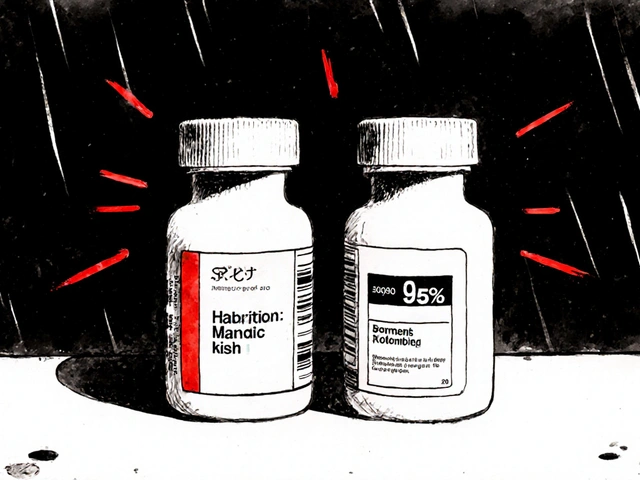Apixaban: What It Is, How to Take It & What to Watch For
If your doctor prescribed apixaban, you’re probably dealing with a clot‑prevention plan. Apixaban is a direct oral anticoagulant (DOAC) that stops blood clots from forming by blocking factor Xa, a key protein in the clotting cascade. Unlike older blood thinners such as warfarin, it doesn’t need routine blood tests to keep the dose right.
Most people take apixaban twice a day with or without food. The typical dose for atrial fibrillation is 5 mg twice daily; if you’re over 80, weigh less than 60 kg, or have kidney problems, the doctor may lower it to 2.5 mg.
Key Benefits and When It’s Used
Apixaban is approved for stroke prevention in non‑valvular atrial fibrillation, treatment of deep vein thrombosis (DVT) and pulmonary embolism (PE), and for reducing the risk of recurrent clots. Because it works quickly—within a few hours—you feel protected faster than with warfarin.
One big advantage is fewer food‑drug interactions. You can enjoy your usual meals without worrying about vitamin K levels, which is a common issue with warfarin. That said, apixaban still interacts with some meds, especially strong inhibitors or inducers of CYP3A4 and P‑gp enzymes.
Safety Tips and Common Side Effects
The most serious risk is bleeding. Look out for unusual bruising, blood in urine or stool, prolonged nosebleeds, or a cough that brings up pink‑tinged sputum. If any of these happen, call your doctor right away.
Typical side effects include mild stomach upset, headache, or dizziness. Most people notice nothing at all after the first few doses.
Avoid taking NSAIDs like ibuprofen unless your doctor says it’s okay—these can increase bleeding risk. Also, tell every health‑care provider you see that you’re on apixaban, especially before surgeries or dental work.
If you miss a dose, take it as soon as you remember if it’s within 12 hours of the scheduled time. Skip it if more than half a day has passed and continue with your regular schedule. Never double up to catch up.
Kidney function matters because apixaban is partly cleared by the kidneys. If you have chronic kidney disease, your doctor may adjust the dose or choose another anticoagulant.
Storing the medication is simple—keep it at room temperature, away from moisture and heat. No special refrigeration needed.
When you’re ready to stop apixaban, don’t quit abruptly. Your doctor will guide a safe transition, possibly switching you back to warfarin or another DOAC depending on why you were taking it.
In short, apixaban offers reliable clot protection with fewer daily hassles than older blood thinners. Staying aware of bleeding signs, checking drug interactions, and following the dosing schedule are the best ways to keep yourself safe while reaping its benefits.
Apixaban and Heart Failure: What Patients Should Know
As a heart failure patient, it's essential to be aware of the medications we take, such as Apixaban. Apixaban is an anticoagulant that helps prevent blood clots, which can be especially beneficial for those with heart failure. This medication can reduce the risk of stroke and other heart-related complications. However, it's crucial to discuss with our doctors if Apixaban is suitable for our specific condition, as it may interact with other medications or cause side effects. Always remember, being well-informed about our treatment options helps us take charge of our heart health.
About
Health and Wellness
Latest Posts


Kamagra Effervescent vs Other ED Medications: A Detailed Comparison
By Orion Kingsworth Oct 3, 2025

The use of clavulanate in the management of pelvic inflammatory disease
By Orion Kingsworth May 27, 2023

Opioid-Induced Itching: How Histamine and Nerve Pathways Trigger It and What Actually Works
By Orion Kingsworth Oct 30, 2025

